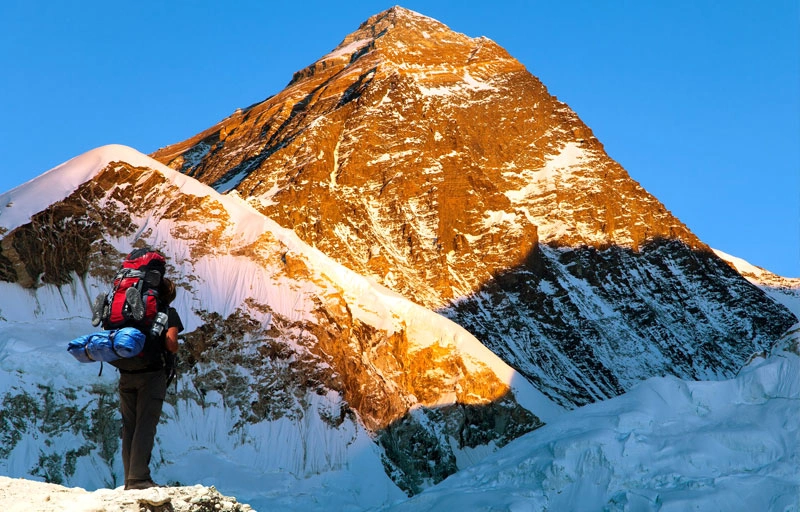Top 15 Religious Places of Nepal: Every Traveler Should Visit
Table of Contents
Introduction
Nepal is a spiritual country that exists in a blend of faith and culture to the point that Hinduism and Buddhism have lived in harmony since ancient times. This conglomeration provides the visitors with the opportunity to see various religious practices under a single roof.
In Nepal, religion plays a very important role in everyday reality, in celebrations, and even in social practices. This devotion is manifested through colorful ceremonies and holy places where the local, as well as those who come to see the place, are depicted as being faithful and reflect Nepal’s deep spiritual traditions and culture.
Touring Nepal’s religious sites is both a spiritual journey and a cultural tourism experience. These destinations welcome visitors who enjoy an incredible serenity, ancient culture, and architectural marvels, thus each visit will be rich and a transformative experience.
Pashupatinath Temple
The Pashupatinath Temple is a world heritage site, situated in Kathmandu, and one of the most sacred Hindu temples dedicated to Lord Shiva. It attracts millions of pilgrims and tourists every year and demonstrates the rich spiritual heritage of Nepal.
This holy destination is especially renowned for the grand Maha Shivaratri festival celebrated by devotees all over the world. Devotees spend the night praying, fasting, and performing cultural dances during this celebration, which makes the temple extremely religious.

The temple complex, which is located on the sacred Bagmati River, is the place of ritualistic cremation. Such a combination of religious activities, as well as the natural environment, is what renders Pashupatinath a very sacred pilgrimage location.
Swayambhunath Stupa
Swayambhunath Stupa, or the Monkey Temple, is one of the oldest and most sacred Buddhist places in Nepal. It has a beautiful panorama of Kathmandu Valley that draws pilgrims and tourists.
Its architecture and religious activities are a symbol of the harmony of Hinduism and Buddhism, which are represented by the site. The presence of monkeys in the open environment is an added feature to the serene environment.

Using the ancient practices, pilgrims rotate the prayer wheels and go in a clockwise direction around the stupa. With a calm environment and cultural values, Swayambhunath is a site worth visiting in Nepal as a spiritual site.
Boudhanath Stupa
Boudhanath stupa in Kathmandu, Nepal, is the largest stupa and a UNESCO World Heritage site. It is a great hub of Tibetan Buddhism, where monks, pilgrims, and visitors come in large numbers.
The huge white dome of the stupa and the colorful prayer flags form a spellbinding view. Pilgrims walk clockwise around the stupa, spinning prayer wheels and chanting mantras.

The spiritual atmosphere of Bouddha and its adjacent monasteries and shops significantly provides the visitors with a rich cultural experience. It is still a very important center of Tibetan Buddhist meditation and community in Nepal.
Lumbini
Lumbini is the holy birthplace of Lord Buddha, situated in Rupandehi, one of the most significant places of worship among Buddhists in the world. Buddhists revere Lumbini for its spiritual meaning and serenity.
The Maya Devi Temple is the very location where Buddha was born and is also flanked by the old Ashokan Pillar that was built in the 3rd century BCE. The two are major attractions to the visitors and the believers.

There are also many international monasteries constructed by various countries in Lumbini. These temples represent a variety of Buddhist practices and provide a view of cross-cultural interactions and religious education.
Muktinath Temple
Muktinath Temple is one of the most sacred pilgrimage sites, which is situated in the Mustang region and is at an altitude of 3,710 meters. It is revered by both the Hindus and the Buddhists, who consider it a symbol of liberation and salvation, and it attracts thousands of devotees from Nepal and neighboring countries.
In addition to that, the temple has 108 waterspouts (which are said to purify the sins) and the burning flame, which burns itself using underground gas. In one of their rituals, pilgrims take sacred baths in the freezing waters, which is viewed as a rite of spiritual cleansing and eventual salvation.

Moreover, Muktinath lies between the Himalayan Mountains and is also a destination for trekkers who are looking to have adventure and spirituality at the same time. The rare blend of religion, nature, and culture makes Muktinath a unique and unforgettable pilgrimage site.
Janaki Mandir
Janaki Mandir, situated at Janakpur, is a grand temple of the goddess Sita, wife of Lord Ram. This holy place is not merely a religious attraction spot, but also a unique reflection of the Nepali culture and architectural variety.
Further, the architectural style of the temple looks remarkably beautiful with a combination of Mughal and Rajput architectural styles, and thus, unlike any other temple in Nepal. The visitors are attracted by its marble domes, large courtyards, and elaborate carvings, which unite both religious worship and beauty.

Janaki Mandir is also decorated with special bright colors during such festivals as Ram Navami and Bibaha Panchami. The main highlight of these festivals is that they bring together thousands of worshipers, making the temple a center of rituals, music, and cultural events that culminate in the spirit of religious and celebrative Janakpur.
Manakamana Temple
Manakamana Temple, dedicated to the “wish-fulfilling goddess,” is a revered pilgrimage site in Gorkha. Pilgrims believe that prayers offered in this area with genuine devotion are answered, and this makes the temple a source of faith and hope to many.
The temple is also distinctively reachable by a scenic ride on a cable car from Kurintar watching breathtaking panorama of hills, rivers, and villages. The very fact of this trip adds to the spiritual experience, combining the beauty of nature with the feeling of the expectation of arriving at the sacred shrine.

Manakamana is a religious as well as a social attraction due to the large crowds of devotees flocking around on festivals and special occasions. It has great spiritual fame, coupled with the cultural vibrancy and accessibility, and hence it will continue to make it one of the most visited pilgrimage sites in Nepal.
Gosaikunda Lake
Gosaikunda is a religiously sacred lake at 4,380 meters, considered a holy religious site in Nepal associated with Lord Shiva. According to Hindu mythology, the lake was created due to the collision of Shiva with the ground using his trident.
Thousands of Hindu pilgrims and Buddhist pilgrims come here in the Janai Purnima festival to have a holy dip in Gosaikunda. Its icy waters are said to cleanse sins and souls.

Going to Gosaikunda is more of an adventure-spiritual voyage. Rhododendron forests, mountain villages, and high passes lie on the path of trekkers till they reach the lake. This is what gives it a special place in the religious world of Nepal, where religious beliefs have been merged with culture and the beauty of nature.
Pathibhara Devi Temple
Pathibhara Devi Temple is one of the most powerful goddess temples located at 3,794 meters in Taplejung. Both the Hindu and Buddhist worshippers travel a long way to worship here.
The temple is associated with belief in wish fulfillment, like Manakamana, but at a greater height. The goddess is worshipped by offering flowers, prayers, rituals, and sacrificing animals.
Pathibhara is an unusual blend of views and spiritualism covering 360-degree views of the Kanchenjunga and surrounding peaks. Being a very high altitude spiritual site in Nepal, it not only gives blessings to pilgrims but also offers beautiful Himalayan scenery.
Doleshwar Mahadev Temple
According to legend, Doleshwar Mahadev represents the head of Lord Shiva, while the Kedarnath shrine in India represents the body, making it deeply significant for devotees. The temple is holy to the followers of Lord Shiva. Several worshippers visit to access its religious strength.
Doleshwar Mahadev Temple is serene and less crowded, thus allowing the pilgrims to have a sense of calm and serenity. This serene place will enable the explorer’s time to think intensively and associate with Shiva as individuals. The peaceful atmosphere is well appreciated by tourists.

It is important in its own way in connectivity to Kedarnath, giving it some cultural and religious significance to pilgrims. Several Hindus believe that this temple is an essential place of worship in Bhaktapur, making it a significant point of pilgrimage in Nepal. The temple represents religion and religious legacy that is related to the veneration of Shiva.
Dakshinkali Temple
Dakshinkali Temple, located near Kathmandu, is dedicated to Goddess Kali. It is busy during Dashain, when devotees perform animal sacrifices as offerings.
The temple is the center of Tantric practices with a lot of religious value. Tantric ceremonies are conducted mostly for visitors to show the fierce and protective energy of the goddess. This puts Dakshinkali in an outstanding position within the spiritualism of Nepal.

Although the sacrifice tradition could be a controversial issue, it brings to the fore the traditional beliefs and cultural practices that have continued to exist for centuries. The place is bordered by forested areas, which contribute to a solemn climate. Dakshinkali is an important place of year-round pilgrimage for Kali devotees.
Budhanilkantha Temple
Budhanilkantha Temple is a famous religious place in Nepal, located at the northern border of Kathmandu Valley, with a remarkable image of Lord Vishnu lying in a pond. This black stone is believed to be among the most sacred references of Hinduism in Nepal.
People come to offer flowers, oil, and prayers, believing that the waters encircling Vishnu contain divine blessings. The temple is the center of worship among the locals, as well as the pilgrims, symbolizing continuation and cosmic unity within the Hindu faith.

There is an ancient cultural belief that states that the kings of Nepal must not subject themselves to Budhanilkantha. However, it is a serene place for worship and meditation today.
Tengboche Monastery
The Tengboche Monastery is an iconic Buddhist religious place in the Khumbu region. It is situated at 3,867 meters and is considered a spiritual center of Sherpas and trekkers on their expeditions to Everest Base Camp.
The monastery is located in the spectacular scenery of Everest, Lhotse, and Ama Dablam. Its courtyard offers one of the most dramatic panoramic views in the Himalaya, which attracts thousands of visitors to this spiritual reflection and photography.

Every autumn, the colorful Mani Rimdu festival is held in this place with masked dances and prayers. It represents the victory of the Buddhist religion over evil and gives an idea of the Sherpa traditions, culture, and inseparable spirituality.
Namobuddha Monastery
Namobuddha Monastery is an important religious place in Nepal since it deals with the selfless sacrifice of Buddha to a tigress and her cubs. According to the pilgrims, this holy place is a symbol of mercy and unconditional benevolence when it comes to spirituality.
The monastery is situated in the tranquil hills of Kavre, home to monks, nuns, and other visitors who visit the monastery in search of meditation. Namobuddha, being a peaceful religious place in Nepal, also offers spectacular Himalayan scenery.

The international tourists visit to take retreats, learnings, and photography. Namobuddha is a spiritual center and a cultural jewel at the same time, with its powerful story, calmness, and the beauties of nature.
Halesi Mahadev Temple
Halesi Mahadev Temple is a religious site of both the Hindu and Buddhist religions in Nepal. It is situated in Khotang, and it emphasizes the beauty of several religions venerating a single sacred location.
The temple is located in a mystical cave, where lord Shiva hides from the demon Bhasmasur. Halesi is a religious place in Nepal that is greatly admired for its caves, shrines, and rituals.
In Shivaratri and Bala Chaturdashi, thousands of pilgrims come here holding lamps and making prayers. Halesi Mahadev is a blend of mythology, devotion, and the wonder of nature that ensures its popularity among spiritual seekers and cultural tourists.
Conclusion
Nepal is a country where it is impossible to distinguish between faith and nature. Mountainous monasteries to the cool lakes, all holy places attest to the spirituality of the nation, and make it an unforgettable experience for travelers all over the world.
Learning about these sacred places provides more than sightseeing. They provide an opportunity for people to participate in age-old traditions, the countless communities of faith, stories of compassion, devotion, and harmony across religions and cultures.
Religious tourism in Nepal is a useful tool that provides a meaningful way for travelers to know culture, history, and spirituality. Visiting these sacred sites with reverence and respect will enrich the experience and provide the future generation with a heritage of eternal times.





